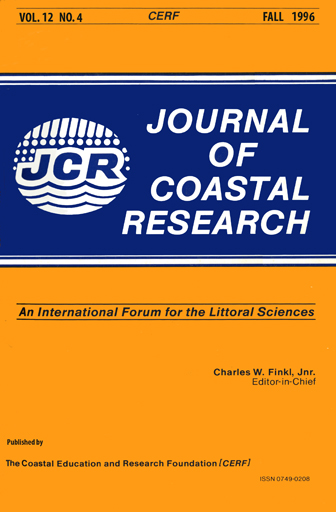Tsunami as a Major Control on Coastal Evolution, Southeastern Australia
Keywords:
s-forms, bedrock sculpturing, catastrophic waves, thermoluminescence dating, barriers, platforms, cliffsAbstract
General concepts of coastal evolution of the southeastern Australian coastline during the Late Pleistocene involve barrier formation by wind and swell waves during marine transgressions and formation of rock platforms by chemical and mechanical weathering at rates of 1-5 mm yr. Where evidence indicates rapid change, storms are often invoked as the causative mechanism. These concepts ignore the important role of a repetitive, rapid, catastrophic tsunami in both coastal erosion and accretion. The impact of a tsunami can be distinguished by four signatures: uncemented clastic deposits; boulders that are imbricated, stacked and uniformly aligned; constructional features; and erosional bedrock sculpturing. The boulder deposits occur at elevations above both the measured and theorised limits of storm-wave action. Bedrock sculpturing has not been attributed previously to marine processes but rather to catastrophic water flow from icesheets or ice-dammed lakes, a phenomenon which has never influenced the mainland coast of Australia during the Pleistocene. Thermoluminescence dating has shown that tsunamis in southeastern Australia, while eroding most Last Interglacial and interstadial barriers, have also contributed to the construction of many present barriers. They have also shaped the rocky coast by modifying raised platforms and in extreme cases ripping enormous slabs of bedrock from promontories and cliff faces lip to heights of 40-50 m. A change in emphasis in the current thinking regarding the processes responsible for coastal evolution is needed in coastal geomorphology to include the impact of repetitive tsunamis which are capable of dramatically and irrevocably modifying a landscape over very short periods of time.


